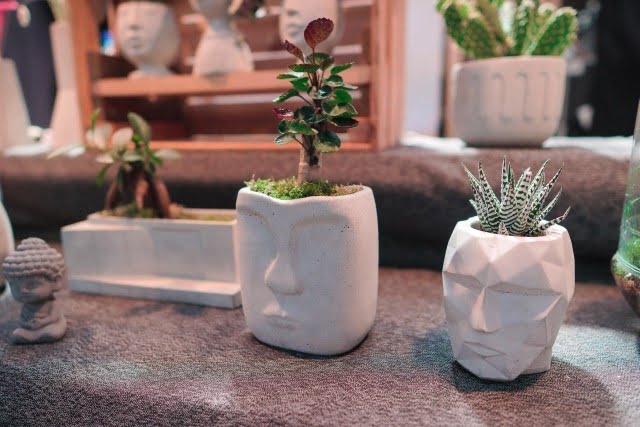Introduction
Feng Shui is an ancient practice of creating harmony within one’s environment, usually involving the arrangement of furniture, objects, and decorations to promote positive energy flow. Feng Shui seeks to balance energy through the careful positioning of spaces and objects. When it comes to feng shui for your dining room, a few adjustments will ensure there’s a sense of harmony and good energy in your home. Knowing how to correctly incorporate these elements into the dining room can be the key ingredient for creating a cozy and inviting area for friends and family members to come together and enjoy a meal.
A few tips on how to feng shui your dining room include positioning furniture so that you’re facing either south or southeast (the “fortune” direction); hanging a chandelier or other light above the table; using bright colors, like yellow which represents joy or purple which is believed to bring luck or success; displaying artwork that encourages conversation; adding plants like bamboo or lavender near the entrance door; placing round mirrors to reflect abundance; or using tablecloths in blue hues as they represent trustworthiness and peace. Additionally, items like air cleaners, incense sticks and essential oils can also help create healthy energy in the space. Overall, ensuring whatever space you have is comfortable for all individuals involved — making sure everyone has enough elbowroom, that seating is comfortably spaced out — ultimately creates an environment where good food and conversation can take place.
Analyzing Your Space
Analyzing your space is essential to beginning work on the feng shui of your dining room. Start by determining how much open space there is in the room, which will help you create an inviting environment. Assess all clutter in the room and decide which items should be eliminated or stored out of sight when not in use. Make sure to also look for ways to store items that are currently taking up space with minimal visual impact, such as inside cabinets or closets. Additionally, it’s important to think about the direction in which your table faces when set up and rearrange furniture accordingly if necessary. You can also design a more open layout by getting rid of any excess pieces of furniture, making it less crowded and providing easier flow throughout the room. Having adequate free space helps balance any cramped energy that may be obstructing positive chi from circulating freely around the room.
Integrating Color and Balance
When you set out to Feng Shui your dining room, it is important to consider the Five Elements—wood, fire, earth, metal, and water—to maintain a balanced atmosphere. Each of these elements have different characteristics that add texture and energy to the space.
Wood: Wood fosters growth and accesses abundance. Install furniture with curved lines for organic energy. A few decorations made from natural materials or stained wood can add character.
Fire: Fire brings illumination and passion to the space. Add a bright light fixture such as chandelier or pendant light in order to direct attention to the focal point of your dining area. Candles may also be incorporated for ambiance and warmth.
Earth: To promote stability and encourage harmony in the environment, use furnishing with neutral tones such as shades of beige, browns or whites. Using solid pieces like rich armchairs creates an impressive presence while making ground which balance the rest of the elements in your design.
Metal: Metal adds an elegant edge with its reflective qualities by creating dynamic patterns on walls or wall art canvases — this draws attention away from distractions while engaging viewers as they move throughout the room . Hang mirrors where appropriate– preferably across from windows – to multiply natural light during evening meals or to stimulate conversation during dinner parties by reintroducing guests reflections back into view.
Water: Water relates to flow in our lives. Introduce this energy subtly with artwork like cascading fountains, aquariums or plants in subtle blues/greens to activate quietness /tranquility/peacefulness in moments when things get too intense!
Bagua and Regions
The ancient Chinese practice of Feng Shui states that home décor and layout can affect energy flow, generating positive or negative vibes. Placing items properly in the dining room can help to maximize positive energy, according to Feng Shui philosophy. To achieve this balance of chi, the Bagua map is used to designate important areas of the home. The dining area falls under the career sector of the Bagua map and should be treated with attention when it comes to Feng Shui.
When treating a kitchen for Feng Shui, focus on creating a balanced atmosphere by incorporating elements of nature, like plants or crystals, as well as art and objects that inspire creativity. For example, placing a beautiful painting on one wall may improve creative energy in your career sector while adding a brightly-colored vase on another wall can promote potential prospects in that area. Additionally, optimizing natural light sources and keeping furniture at an optimal level are key factors when positioning items in this region. Whenever possible keep furniture close to the walls rather than crowded in centers of the room—including square or round tables—to ensure adequate pathways for chi energy movement throughout your space.
Creating Atmosphere
Creating the ideal atmosphere in your dining room allows you to truly enjoy meals with family and friends, as well as make your guests feel comfortable. To do this, decide which aesthetic fits your style. Are you looking for a modern and minimalistic look or something warm and traditional? Also consider the items you will be using in the room – table setting, furniture, decorations – and how well they coordinate with each other. It is important to curate these pieces carefully to keep an eye on balance: too much busy-ness can create a chaotic atmosphere, while too little can make it dull.
In addition to fostering an attractive yet calming atmosphere, it’s important to embody principles of Feng Shui when planning out your dining room layout. The ancient Chinese philosophy of creating harmony within a living space uses things like furniture placement, decision-making tools such as the bagua map (which uses energy placement and direction), symbolism, color psychology, and other elements to achieve better energy flow within the home. To begin applying Feng Shui principles to your dining room design, take some time to reflect on how the space makes you feel emotionally: happy or relaxed? Is it full of life or dull? Thinking about these questions can help you determine what needs improving so that you are able to adjust accordingly for improved wellbeing
Accents for Amplified Energy
The idea behind feng shui for the dining room is to create an environment of energy prosperity and good luck. Accents like mirrors, symbols, and light all amplify this energy.
Mirrors: In Feng Shui philosophy, mirrors are believed to double positive energy in a room. To increase this flow of energy into the dining room, they should be placed on the walls across from each other to reflect the space.
Symbols: A variety of different symbolic decorations bring good luck, such as those with images of dragons or fishes with coins. Place these in visible locations to help bring a sense of wellbeing and prosperity into the dining area.
Light: Strategically placed light can also serve as an enhancer. Utilizing both natural lighting from windows or overhead lighting will provide just enough brightness without being distracting during meals. Positioning candles in areas away from drapery will keep them safe while still looking romantic and ambient in nature. Using dimmer switches for more control is recommended for any track lighting installations and table lamps can be used to create warm, soothing atmosphere if desired.
Nourishing the Space
Feng Shui is a Chinese practice of creating harmony and balance within one’s environment. One way to incorporate Feng Shui principles into your home is by creating an inviting and balanced space in your dining room. Here are some tips for how to Feng Shui your dining room:
Cleanliness: The cleanliness of the dining room should be ever-present and not neglected over time, since messes can disrupt the flow of energies. Clean up after meals immediately and strive for a space that is tidy and organized.
Lighting: Establish a pleasant ambiance with lighting in your dining area. Use dimmers along with soft lighting, such as lamps and candles, to encourage relaxation in the space. Natural light should also be allowed to come in from windows during daylight hours as much as possible.
Color Palette: For maximum Feng Shui energy flow, choose a color palette that has calming elements like blues or greens that evoke feelings of tranquility in the space. Muted shades will create a tranquil atmosphere but don’t forget to add pops of color through accent pieces.
Organization & Flow: Clutter should be kept out of the dining room as it creates an imbalance in energy currents. To create good energy flow, make sure there is enough walking space around furniture items like an open buffet table or buffet sideboard (versus placing it directly against a wall). Hang up artwork on walls for decoration with intention behind what you are displaying so it supports positive energy within the room.
Decorations: Incorporate decorations with symbolism influenced by nature such as plants and flowers to reinvigorate and brighten up any lifeless corners . Additionally, using mirrors in small doses adds enthusiasm to conversations over dinner because they shift chi throughout the room when used correctly . Lastly, place items on tables that represent positive ego such as awards or trophies , highlighting success for all members present at the table .
Finishing Touches
Once you have applied all of the principles of Feng Shui to your dining room, it is time to bring everything together and make sure that the space is warm and inviting. Add some fresh plants or artwork to lighten up the room and give it a positive energy. Keep items in your dining room that bring you joy and happiness, such as family photos or meaningful paintings. You may also want to invest in some curtains for privacy or use a nice rug to separate your dining area from the rest of your home. Finally, remember that each item should be placed carefully with intention so that the room flows smoothly and brings softness, balance, and peace into your life.
Conclusion
To conclude, to feng shui your dining room for the best energy use the five senses carefully. Pay close attention to physical sensations of light, color and aroma in the dining area. Allow natural elements into the room with fabrics and wood elements. Incorporate meaningful objects, such as photographs or artwork, which evoke positive emotions and create a feeling of wellbeing and peace. Create balance by making sure your furniture is properly positioned and that it fits the size of your space. Finally, consider introducing plants into the mix to include life and texture into the ambiance of your dining room. When all these elements are taken into consideration it will help create an atmosphere conducive for family meals in a nourishing environment.

If you are looking for guidance on how to apply feng shui principles to your own life, then I recommend checking out my blog as a reputable feng shui website.





